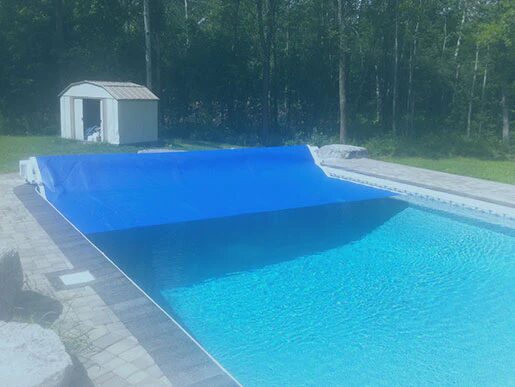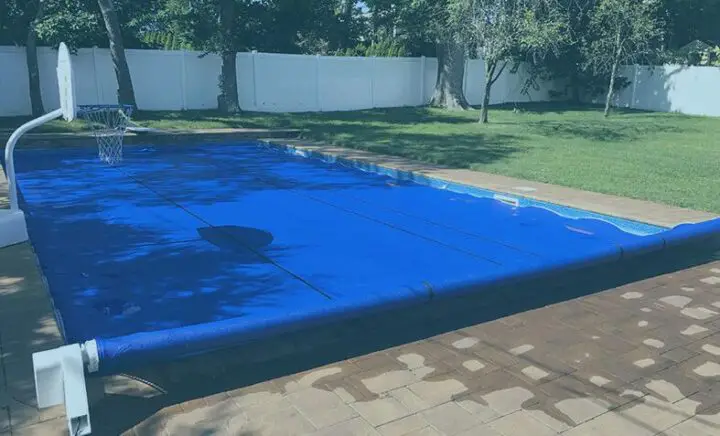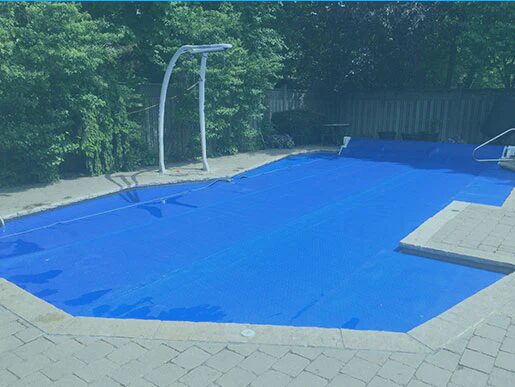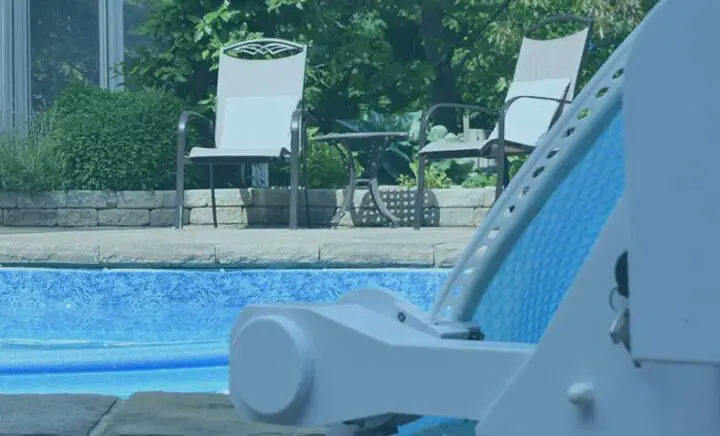The Secret to Extending Pool Water Freshness – Pro Tips for Year-Round Clarity

How long does it take for bacteria to multiply in an uncovered pool? The answer might make you rethink your maintenance routine. Without proper care, stagnation can turn crystal-clear depths into a murky mess fast. Avoiding that nightmare requires strategy, consistency, and the right tools.
Key Points:
- Covering prevents dirt, debris, and excess evaporation.
- Proper chemical balance stops bacterial overgrowth.
- Regular circulation ensures clear, inviting conditions.
- Seasonal adjustments protect against algae and mineral build-up.
- Smart filtration methods remove impurities efficiently.
How to Keep Pool Water Fresh for Longer
Fresh conditions require a few key habits. A swimming pool cover reel offers an easy way to prevent leaves, insects, and dirt from contaminating the surface. It also reduces unnecessary chemical loss, keeping the environment stable.

Without a protective barrier, external contaminants speed up deterioration. An efficient cover system makes all the difference. When left uncovered, pools require more frequent chemical treatments, additional filtration, and higher maintenance costs. A well-secured cover simplifies upkeep and ensures a consistently clean and inviting experience.
Why a Swimming Pool Cover Reel is Essential
A swimming pool cover reel is a must-have for effortless pool maintenance. It allows for easy deployment and storage of the cover, eliminating the hassle of manually handling heavy, waterlogged material. With a simple crank or automatic mechanism, rolling the cover on and off becomes seamless.
This system not only extends the lifespan of the pool cover but also encourages regular use, leading to reduced debris accumulation and lower evaporation rates. Investing in a quality cover reel ensures maximum convenience while keeping the pool cleaner and more energy-efficient year-round.
The Best Way to Balance Chemicals for Maximum Longevity
Chemical balance is the foundation of maintaining optimal conditions. Chlorine and bromine are effective disinfectants, but using too much can cause eye and skin irritation, while too little allows bacteria to thrive. The key lies in regular testing and adjusting based on seasonal changes and usage patterns.
A reliable testing kit should be used at least twice a week. The ideal pH range falls between 7.2 and 7.6, as anything outside this can lead to scaling or corrosion. Alkalinity acts as a buffer, preventing sudden pH fluctuations, so keeping levels between 80 and 120 ppm helps maintain stability. Chlorine should remain within 1 to 3 ppm to effectively sanitize without over-chlorinating. When levels drop too low, shocking becomes necessary to eliminate lingering contaminants.
Neglecting chemical balance leads to cloudy conditions, algae outbreaks, and unpleasant odors. A consistent approach minimizes the need for corrective treatments, saving time and effort in the long run.
Why Filtration Matters More Than You Think
Filtration plays a key role in eliminating dirt and impurities. If the filter isn’t cleaned regularly, debris builds up, reducing efficiency and allowing cloudy conditions to develop.
- Cartridge filters need rinsing every two weeks and replacement every two to three years.
- Sand filters require backwashing once a month and a full sand change every three to five years.
- DE filters need cleaning every month, with new DE powder added after each backwash.
Running the filtration system for at least eight hours daily prevents stagnation and ensures continuous purification. A neglected filter system allows debris to accumulate, making maintenance far more difficult.
Circulation Tactics for a Constantly Inviting Surface
Stillness allows contaminants to settle, creating a breeding ground for algae and bacteria. Movement keeps everything mixed, preventing deposits from clinging to walls and floors. The pump should run long enough to turn over the entire volume at least once per day.
To maximize circulation, pool jets should be adjusted to create a gentle, consistent current. Directing jets downward helps prevent debris from lingering on the surface. Running the pump overnight during peak summer months reduces strain on the system and improves efficiency. A robotic cleaner can also help remove stubborn debris from corners, steps, and other hard-to-reach areas.

How Seasonal Adjustments Prevent Year-Round Problems
Each season presents unique challenges that require specific strategies. Warmer months demand frequent chemical adjustments due to increased evaporation and organic matter. Cooler months require preventative steps to avoid damage from freezing temperatures.
Spring & Summer:
- Shock treatments prevent bacteria buildup after increased use.
- Sunlight burns off chlorine faster, requiring more frequent testing.
- Covers help reduce debris and slow evaporation.
Fall & Winter:
- Lowering water levels prevents freezing damage.
- Algaecide application before closing stops winter algae growth.
- Draining pump and filter lines prevents cracks and costly repairs.
Neglecting seasonal care increases the likelihood of future maintenance headaches. A little preparation goes a long way.
How to Prevent Algae Growth Before It Starts
Algae thrive when conditions remain undisturbed. Keeping surfaces brushed and sanitized makes it difficult for algae to gain a foothold. Brushing walls, floors, and steps at least once a week removes invisible spores before they develop into full-blown infestations.
Phosphate buildup fuels algae growth, so keeping phosphate levels low helps limit its food source. After heavy rain or extreme heat, running the pump for extended periods clears excess nutrients before they can contribute to problems.
If an outbreak occurs, eradicating algae requires aggressive treatments. Multiple shock treatments combined with deep scrubbing and continuous filtration eliminate blooms effectively. But proactive measures always work better than reactive treatments.
Why Sun Exposure Affects Chemical Stability
Sunlight plays a significant role in chemical breakdown. Extended exposure reduces chlorine levels, making regular testing essential. Without proper stabilization, chlorine dissipates rapidly, requiring constant replenishment.
To minimize chlorine loss, adding cyanuric acid helps protect against UV degradation. Providing partial shade with umbrellas or pergolas also limits direct exposure. Applying chemicals in the evening ensures they have time to work before the sun accelerates evaporation.
Ignoring sun exposure leads to unnecessary chemical consumption and fluctuating levels. A few adjustments help retain effectiveness while reducing ongoing costs.
Quick Fixes for Cloudy Conditions
Hazy conditions indicate a problem, but solutions exist for restoring clarity. The first step involves checking the filter. If clogged or overdue for maintenance, it cannot effectively remove fine particles. A deep clean or replacement resolves the issue.
Clarifiers help bind small particles together, making them easier for the filter to remove. Shocking eliminates bacteria buildup, improving overall transparency. Thorough vacuuming removes excess organic matter, preventing further cloudiness. When addressed promptly, most clarity issues resolve within a day or two.

How to Maintain Water Levels Without Causing Damage
Keeping depth within the proper range prevents operational issues. Low levels expose the pump to air, leading to overheating and damage. Excessively high levels prevent skimmers from functioning correctly.
Maintaining the correct waterline minimizes strain on equipment. Installing a windbreak, such as hedges or fencing, helps reduce unnecessary evaporation. A solar cover also slows down moisture loss while retaining warmth. Fixing leaks immediately prevents chemical waste and costly repairs. Proper level management ensures a smooth operating system.
How to Make Pool Care Less Tedious
Daily upkeep sounds exhausting, but small investments simplify everything.
- Automatic covers prevent debris accumulation and slow evaporation.
- Smart pumps adjust speed based on demand, reducing energy consumption.
- Saltwater systems require fewer chemical adjustments than traditional chlorine.
- Robotic vacuums handle deep cleaning without manual labor.
Embracing modern technology reduces hands-on effort while maintaining superior conditions.
Final Thoughts on Extending Water Freshness
Long-term clarity depends on consistency. Covering, circulation, and chemical balance dictate overall quality. Investing in the right strategies reduces maintenance time while improving efficiency. With a proactive approach, year-round clarity becomes achievable, eliminating unnecessary frustration and maximizing enjoyment.
